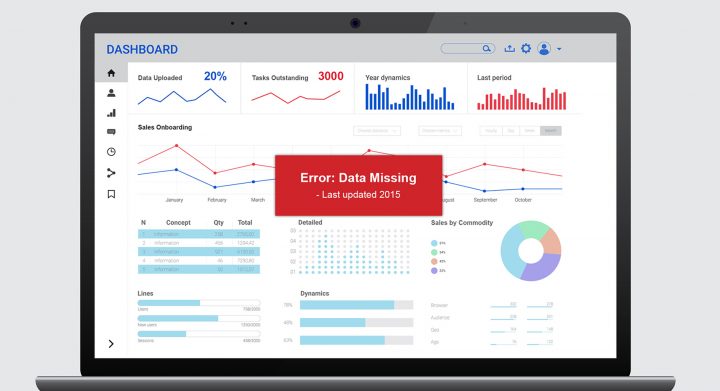10 years at Goldman Sachs: 10 years at psKINETIC “Goldman Sachs has clearly shaped your approach to building psKINETIC,” a colleague said …


Salesforce.com (“SFDC”) is a powerful platform. However, when it comes to streamlining complex processes to enable automation and improve data, its shortcomings become clear.

Below we set out the challenges facing large SFDC clients on the sell-side and buy-side encounter, and how we are using Appian (www.appian.com) as the intelligent glue to ‘tame’ processes ridden with excel and ad hoc emails and integrate these processes seamlessly with SFDC.
The result? You get more for the sizeable chunk you spend with SFDC: you service your customers better, have more reliable data to continue the improvement cycle and, free your staff up from mundane and error-prone jobs.
It started with a nice, tidy SFDC CRM implementation 5 to 10 years ago…
The objective was right; you wanted to keep track of your clients and get a good 360° view. You were thinking ‘it is so configurable’ or ‘there is an SDFC app for that use case’.
Unfortunately, the world and your processes have moved on. You are now finding yourself with numerous manual workarounds and important processes being run off excel and ad hoc email. Institutional onboarding has become tricky; ongoing compliance or AML monitoring more important; promptly dealing with escalation from trade errors a must (it is part of the value you add compared to the rest of the Street); new product governance is a new ballgame, etc etc.
SFDC is a great tool for the right job. Its strength is not complex workflow, messy case management or intelligent orchestration between systems, for that we use Appian as a SWOT team (which seamlessly can receive instructions from SFDC and then swiftly return to base with the right data).
You have client data in many, many systems
A lot of core processes in the world of buy-side (asset managers, hedge funds) and the sell-side (sales and trading, investment banks) actually work very well. Specialist, dedicated systems have been refined over years – new features, improved latency, etc. The problem is when you have five, 10 or 100 different systems (this is excluding big shared excel trackers) and getting a front-to-back 360° view of your customers is near impossible with SFDC alone.
So, what do most organisations do? First, you build a fair bit of workflow in SFDC – which is hard to do quickly and safely. Then, excel crops up everywhere and you use very expensive people to remind expensive people to update SFDC daily or weekly. What do you do when you quickly need a tailored process for a new AML requirement? Or when you need to do periodic KYC on legal entities? You put it in another excel sheet.
What is the result? Messy processes, costing time, that are hard to audit and deliver poor data (since you now can’t trust the data in SFDC, the team on the ground decides to capture some more data points in excel…)
Improve data quality? Forget the idea that people will manually, consistently, update SFDC
You can keep throwing people at the problem and sort of solve it client-by-client interaction. But the problem that is almost impossible to solve is getting high-quality data entered into your CRM system. You will only get high-quality data at scale if the data capture ‘just happens’ inside the workflow. See above, once people stop trusting the data, they will build another excel process!
Looking to automate? Sorry, but first you need to have an end-to-end process
The possibilities of process automation and the use of AI are very material in the front-middle-back-office chain. However, just like keeping track of customer interaction in an old Red & Black notebook, a process ‘interrupted’ by ad hoc emails and excel sheets is a poor foundation from which to start experimenting with new sexy technology solutions. First, you need a reasonably well-defined, digitally auditable, process end to end. Once you have set up your laboratory (capturing actions and decisions by staff in a structured manner) the data will then point you to the automation opportunities.
The good news: Tame complex processes and get more out of SFDC in 90 Days!
Using our intelligent automation experience and over a decade of helping organisations tame processes and glue systems together, we can help you go from idea to deployment, including SFDC integration – in 90 Days.
Want to see how Appian can orchestrate data and processes in and out of SFDC?
Contact us for a demo.
Email Jo.hadden@pskinetic.com
Insights
Ingolv T Urnes: The Goldman Memoirs – Part Two
No Mission Impossible: Snowstorm & Car Crash Another part of the DNA was this idea of never giving up. The deal or …
Ingolv T Urnes: The Goldman Memoirs – The Great Finale
On Trust, Speed and Risk (Management) Reading about Goldman in the popular press in the nineties and the noughties, you may have thought this is a big …

Tech & Data: Why Is Everything Taking So Damn Long?
In my discussions with senior leaders of Alternative Asset Management firms, I often hear the same refrain: “why is it taking so damn long?” or “when am I actually going to see return on my tech or data investment?”
Want a solution? Then check out these 6 Rules.

Tech & Data: Why Is Everything Taking So Damn Long?
In my discussions with senior leaders of Alternative Asset Management firms, I often hear the same refrain: “why is it taking so damn long?” or “when am I actually going to see return on my tech or data investment?”
Want a solution? Then check out these 6 Rules.


